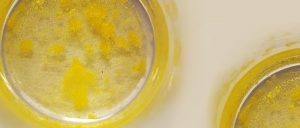
A new process for the highly selective precipitation of gold and other metals in electronic waste and traditional mining ores using recyclable amide compounds.
The method is simple and with a lower environmental impact, avoiding the use of organic solvents and energy-intensive processes.
Application
Development Status
Opportunity
The extraction and recycling of precious metals from waste materials and conventional ores represent a significant technological and environmental challenge. A new approach has been developed for the recovery of precious metals from e-waste and their extraction from conventional ores. This innovative approach overcomes the existing environmental and safety concerns associated with traditional methods. We are now seeking a commercialisation partner.
Technology
The innovative process involves the selective and sequential precipitation of gold and precious metal compounds from an aqueous acid solution using a highly selective precipitation agent. This is followed by the harvesting of pure metal salts by washing the solids with water and by the recycling of the precipitant for re-use.
The patent-pending technology is an environmentally friendly alternative to gold and precious metal refining and recycling. It offers an alternative to the use of cyanide-based processes and energy-intensive smelters for the recovery of precious metals from e-waste, and their extraction from conventional ores and concentrates in the mining sector. The use of precipitation instead of solvent extraction can minimise technological and environmental issues and this method for metal separation can be integrated into a variety of recycling and refining processes.
Benefits
Publication
L.M.M. Kinsman, B.T. Ngwenya, C.A. Morrison, J.B. Love, “Tuneable separation of gold by selective precipitation using a simple and recyclable diamide”, Nature Communications, 2021, DOI:10.1038/s41467-021-26563-7)
Quote: TEC1104344

Senior Technology Transfer Executive
College of Science and Engineering
College of Medicine and Veterinary Medicine